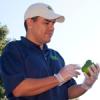Hi Slab,
Thanks for info. Indeed (similar limit to UK I believe). IMO, not too many people will happily drink water at 5ppm free Cl2 unless no choice. Smell is near-offensive IMEX.
Getting back to the OP, reference was to fresh produce. I assume raw. RTE or not unknown. Product / process unknown. Location washing stage unknown.
Not my product area but in general the "Cl2" level and the terminology could IMO depend on all the above but in practice the customary terminology is probably as indicated in my earlier post/link.
If the OP was talking about something like a hydrocooler the usual CCP refs i have seen are usually in the 1-5ppm "Cl2" range. Not 200ppm.
However some (cruder?) fresh produce processes afaik have wash steps where ca. 200 ppm of "Cl2" is mentioned. From memory bean sprouts USA regulatory require X thousand ppm "Cl2".
(OT - USA importers at one time routinely requested all their raw seafood products to be dipped in 1000ppm "Cl2" before freezing. Maybe they still do.)
i guess for an organically loaded fresh produce system/process, free Cl2 is the logical parameter.
@Buckeye - As per above, you may have to provide a little more info. regarding yr product/process/ step if you wish for a quantitatively meaningful source reference ?



















